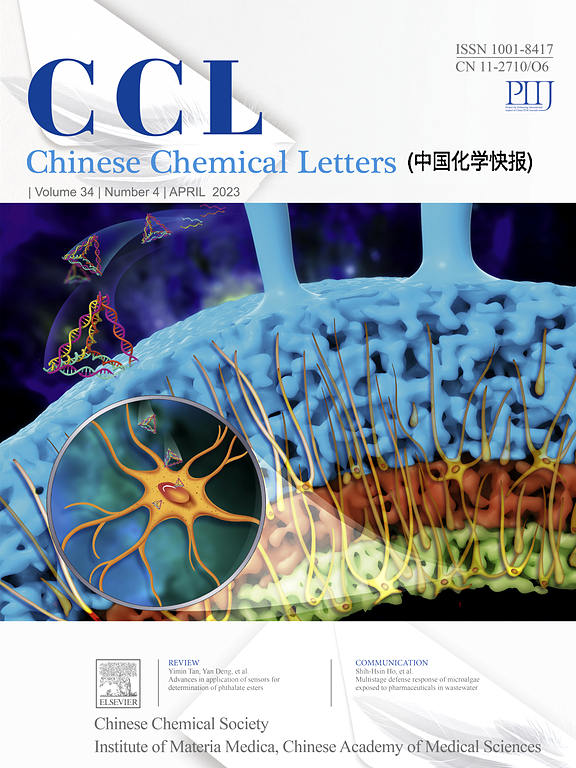镍基合金及其硫化物磺化氧化辅助碱性海水裂解节能制氢研究
IF 9.4
1区 化学
Q1 CHEMISTRY, MULTIDISCIPLINARY
引用次数: 0
摘要
建立一条节能、经济的无限海水制氢路线是实现碳中和和低碳发展的一种有前景的战略。与动力学缓慢的析氧反应(OER)相比,热力学有利的硫氧化反应(SOR)在减少水电解能量输入的同时,使S2-污染物得以回收。本文制备了一种具有AlNi3/Al5Mo异质结构的纳米多孔NiMo合金(np-NiMo),用于在50 mA/cm2下的析氢反应(HER, -0.134 V对可逆氢电极(vs. RHE)),该反应需要Al89Ni10Mo1作为前驱体并进行脱合金处理。进一步,用S粉对np-NiMo合金进行热处理,在OER(1.544 V vs. RHE, 50 mA/cm2)和SOR(0.364 V vs. RHE, 50 mA/cm2)条件下生成mo掺杂NiS2 (np-NiMo-S),同时仍保持纳米结构优势。此外,二电极np-NiMo阴极电解槽系统(1 M KOH + 海水)耦合np-NiMo-S阳极(1 mol / L KOH + 海水 + 1 mol / L钠),一个非常超低细胞的潜力0.532 V是收购了50 mA / cm2,约1.015 V 低于正常碱性海水分裂。理论计算证实,np-NiMo中的AlNi3/Al5Mo异质结构促进了H2O的解离,从而获得了优异的HER,而np-NiMo- s中的mo掺杂物降低了从*S4到*S8的速率决定步骤的能垒。本研究开发的两种镍合金对实现碱性海水的节能制氢和富硫污水的硫回收具有重要意义。本文章由计算机程序翻译,如有差异,请以英文原文为准。

NiMo-based alloy and its sulfides for energy-saving hydrogen production via sulfion oxidation assisted alkaline seawater splitting
Establishing an energy-saving and affordable hydrogen production route from infinite seawater presents a promising strategy for achieving carbon neutrality and low-carbon development. Compared with the kinetically sluggish oxygen evolution reaction (OER), the thermodynamically advantageous sulfion oxidation reaction (SOR) enables the S2- pollutants recovery while reducing the energy input of water electrolysis. Here, a nanoporous NiMo alloy ligament (np-NiMo) with AlNi3/Al5Mo heterostructure was prepared for hydrogen evolution reaction (HER, -0.134 V versus reversible hydrogen electrode (vs. RHE) at 50 mA/cm2), which needs an Al89Ni10Mo1 as a precursor and dealloying operation. Further, the np-NiMo alloy was thermal-treated with S powder to generate Mo-doped NiS2 (np-NiMo-S) for OER (1.544 V vs. RHE at 50 mA/cm2) and SOR (0.364 V vs. RHE at 50 mA/cm2), while still maintaining the nanostructuring advantages. Moreover, for a two-electrode electrolyzer system with np-NiMo cathode (1 M KOH + seawater) coupling np-NiMo-S anode (1 mol/L KOH + seawater + 1 mol/L Na2S), a remarkably ultra-low cell potential of 0.532 V is acquired at 50 mA/cm2, which is about 1.015 V below that of normal alkaline seawater splitting. The theory calculations confirmed that the AlNi3/Al5Mo heterostructure within np-NiMo promotes H2O dissociation for excellent HER, while the Mo-dopant of np-NiMo-S lowers energy barriers for the rate-determining step from *S4 to *S8. This work develops two kinds of NiMo alloy with tremendous prominence for achieving energy-efficient hydrogen production from alkaline seawater and sulfur recycling from sulfion-rich sewage.
求助全文
通过发布文献求助,成功后即可免费获取论文全文。
去求助
来源期刊

Chinese Chemical Letters
化学-化学综合
CiteScore
14.10
自引率
15.40%
发文量
8969
审稿时长
1.6 months
期刊介绍:
Chinese Chemical Letters (CCL) (ISSN 1001-8417) was founded in July 1990. The journal publishes preliminary accounts in the whole field of chemistry, including inorganic chemistry, organic chemistry, analytical chemistry, physical chemistry, polymer chemistry, applied chemistry, etc.Chinese Chemical Letters does not accept articles previously published or scheduled to be published. To verify originality, your article may be checked by the originality detection service CrossCheck.
 求助内容:
求助内容: 应助结果提醒方式:
应助结果提醒方式:


